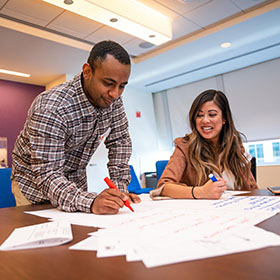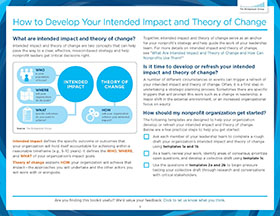Intended Impact and Theory of Change Resources
Intended impact and theory of change clarify what impact a nonprofit will hold itself accountable for and how it will achieve it. The resources here include an article that describes the concepts in-depth, a toolkit with templates for building an intended impact and theory of change, and case studies detailing how a number of organizations approached developing their own.


